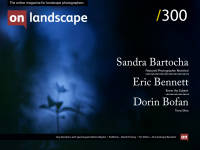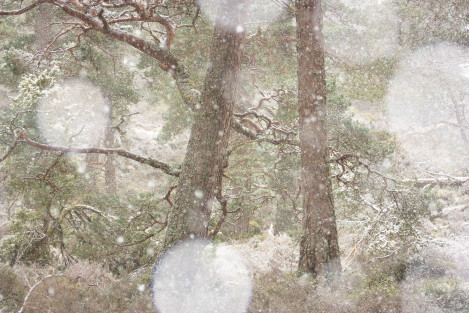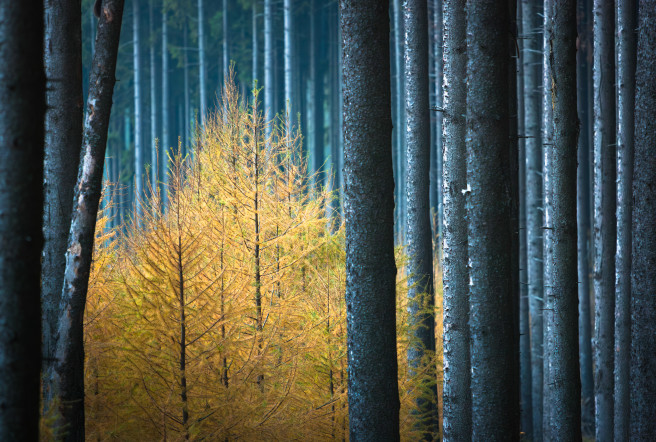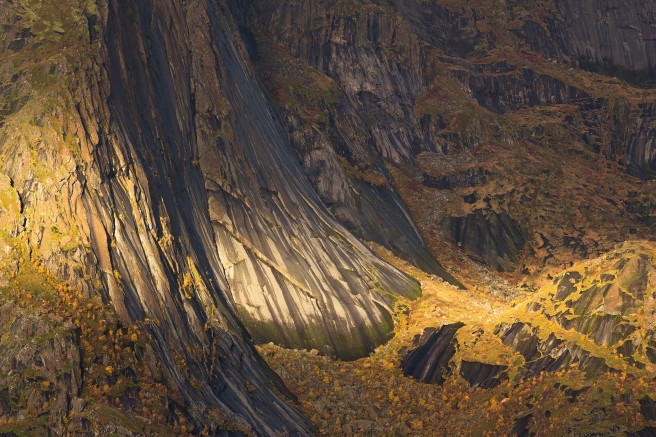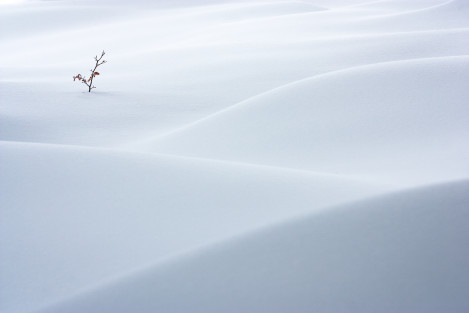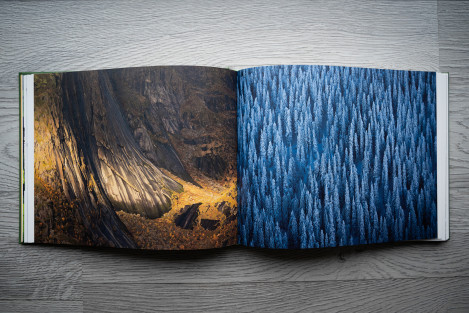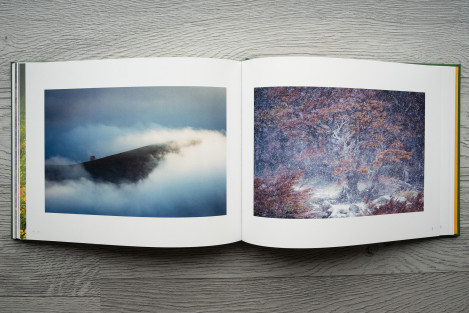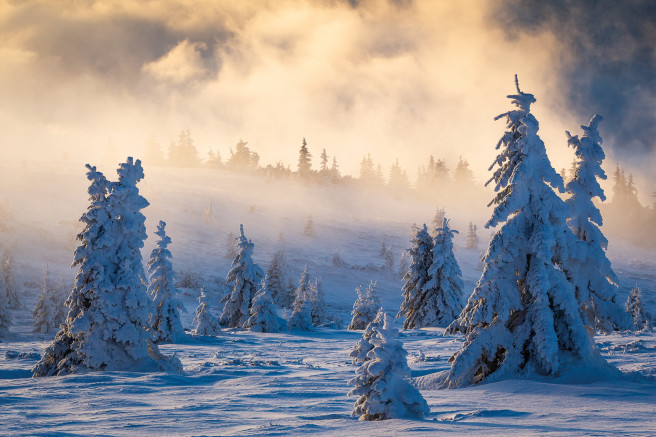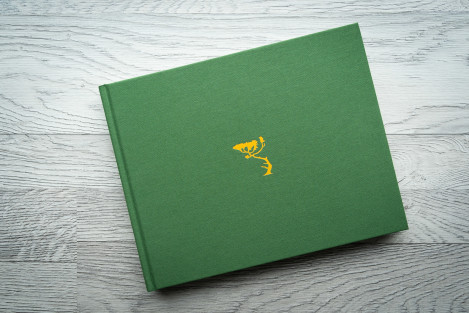A project about forests and trees

Dorin Bofan
Dorin Bofan is a professional photographer specializing in the field of nature and landscape photography. He co-authored the book “Why Photography?” and he organizes nature photo tours all across Europe. His photographs and articles have been published in National Geographic (RO), National Geographic Traveller (RO), Photo Magazine (RO), Foto-Video (RO), GDT Forum Naturfotografie (DE) and whytake.net
Terra Silva are two Latin words. They loosely mean "the land of the forest". Since this project is about forests and trees and since my native language is a direct descendant of Latin, I thought it would be a fitting title. More so, the idea came about in 2015 while I was freezing in a bothy writing in a journal about my experience in Cairngorms National Park, photographing the Caledonian forest, a Latin name given by the Roman Empire to the north side of Great Britain.
On that particular trip to Scotland, I probably had the biggest strike of luck of all the trips dedicated to the project. On the second day, the temperatures dropped, and it started to snow. The landscape was shaped by the cold spell. The Scots pine trunks stood out against the blank canvas created by the transient snow. Sometimes, everything was silent but immediate and gripping. Being alone could only enhance this feeling. Other times, the wind blew with great power, rushing the clouds and leaving brief moments for the sun to shine. The swiftly changing weather of Scotland graced with some good memories. It reminded me that I finally needed to change my seven-year-old boots - walking hours on end through dense vegetation covered in melting snow will get your feet wet.
Diversify my approach
After Scotland, I imagined myself going on trips all over the planet to photograph various forest ecosystems, a thing that usually requires a generous budget and plenty of time, none of which I had. So, instead, I did a few scouting trips for future photo tours where I focused almost solely on photographing trees. This way, I could justify spending the money.
I did a lot of backpacking in my local mountains, taking my time without being worried about breaking the budget. Between 2015 and 2020, I managed to make some of my favourite images since I started photography while being responsible with the finances, but also have a better understanding of the place through multiple visits. Though I admit there were several occasions where I got lucky with the right conditions on my first visit. I'm the kind of photographer who doesn't plan too much (although there was always some planning involved) and I do think that every type of landscape and any kind of light can produce unique images. So I worked with what I had, trying to diversify my approaches of the same subject instead of exploring new places with each visit.
Reviewing my existing catalogue
Another thing I did was to look at my portfolio before 2015. I felt there were a few older images that would fit the project quite well, images that I always liked, that stood the test of time. However, I was afraid that this might turn the project into a collection of images from my portfolio instead of images that I set out to make specifically for Terra Silva. I came to the conclusion that this was an acceptable compromise if wanted to present the best images of trees that I could possibly make. The first image in the book, as every project should end with a book or at least some printed form, is a good example of that. Made in 2013, this little pine tree photographed in Norway was discovered by my wife while we made a quick stop on our way to the next camping spot.
Book design
The problem with a project about trees is that it can go on forever. So I had to make a decision at one point. I had around 120 images that I felt were worthy to make up a book. A first edition of Terra Silva, to be more exact. Because I know I'm never going to stop working on it. There are still places to see, forests to explore, and images to be made. I started the image selection in 2022 while continuing to produce new work. At the beginning of 2023, I entered the last phase, the book. Since I published another book a few years before, I had some previous experience in book design, which I did myself. I'm always keen on learning new things, and design, in general, has always appealed to me. I knew I wanted the same dimensions, 28x22 cm, as the first book. This is because I would like to be able to present my whole portfolio as a collection of books that look and feel the same (just an idea; it might change with time).
There are, however, a few advantages with smaller books. They are more affordable without sacrificing quality in production. As people are less and less interested in physical books, a high price might make them even less interested. More so, I want my books to appeal to a wider audience, not only photography book connoisseurs but people who like nature and the outdoors and people who like arts in general. As for the paper, I wanted something that would feel organic, closer to what one would experience upon touching a tree or a leaf. Matt paper was the ideal candidate, although I knew it could be tricky to print on. The printing house I worked with, Editoriale Bortolazzi Stei in Italy, sent me a few samples and in the end I went for a matt paper with a velvet surface and a high thickness - GardaPat Bianka (pure white shade). The details and colour reproduction came out great while keeping that organic feel I was after. Of course, these choices are subjective, and I think it's important that you, as the author, are satisfied with the final product. My expectations were surpassed.
My biggest challenge
The biggest challenge in making the book was the text. Writing is something I enjoy, even though it doesn't come as easily as photography to me. I set out from the beginning to take the scientific route, reading books and studies about forests, ranging from the history of trees on our planet to why they are critical to the land environment and our relationship as a species to them.
Terra Silva was a joy to make, and I'm grateful for all the time I spent among the trees with my camera. However, there were moments, especially during those many days spent in front of the computer, when I felt desperate or frustrated like this wasn't going to end any time soon. After a while, I took it as part of the process. There has to be some struggle for art to make its way and become relevant.
Forests have always been a part of my identity, so I knew I had to bring this book to life. In spite of not having a generous budget that would allow me to explore more - a trip to California to see the oldest and the tallest trees on earth is probably my biggest regret. In spite of having spent a lot of time at home taking care of my son (he was born in 2017) when I should have been in the field. In spite of having long periods of stressful work (as a freelance photographer and guide, you spend most of your time doing anything but photography) or simply feeling overwhelmed by daily life. Sometimes I just sat with the disconfort and frustration, accepting that there were other priorities.
Looking back at all these years, Terra Silva was a constant thing in my life, almost like a string which connected big and small events, like asking my wife to marry me on a camping trip far away, the birth of our son, the travels we did together, the shared mountain hikes with old and new friends or the time spent by myself in the wild. I remember all these moments when flipping through the book as each image connects to a beautiful memory. Who knows, without realising it’s probably why I started the project in the first place.
You can order Terra Silva at https://dorinbofan.com/terra-silva-book/.

